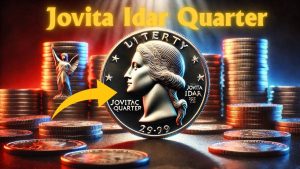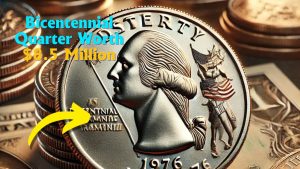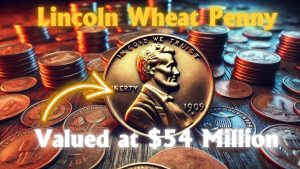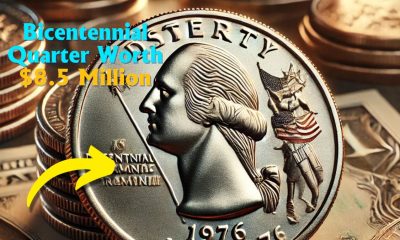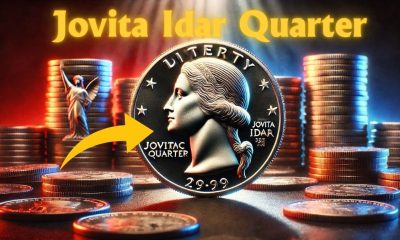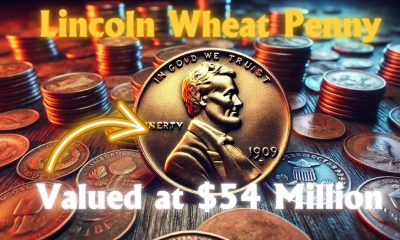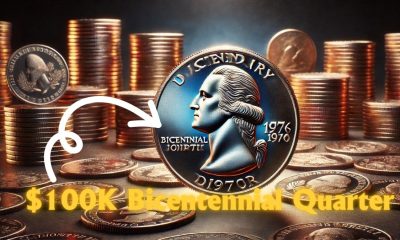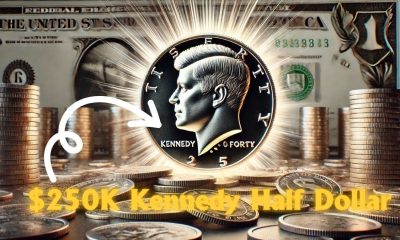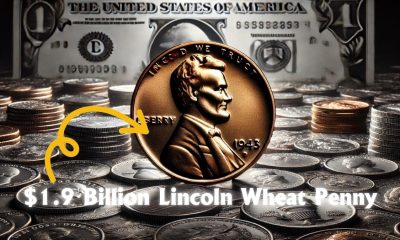Money
Lincoln Wheat Penny Worth $610K Still Circulating
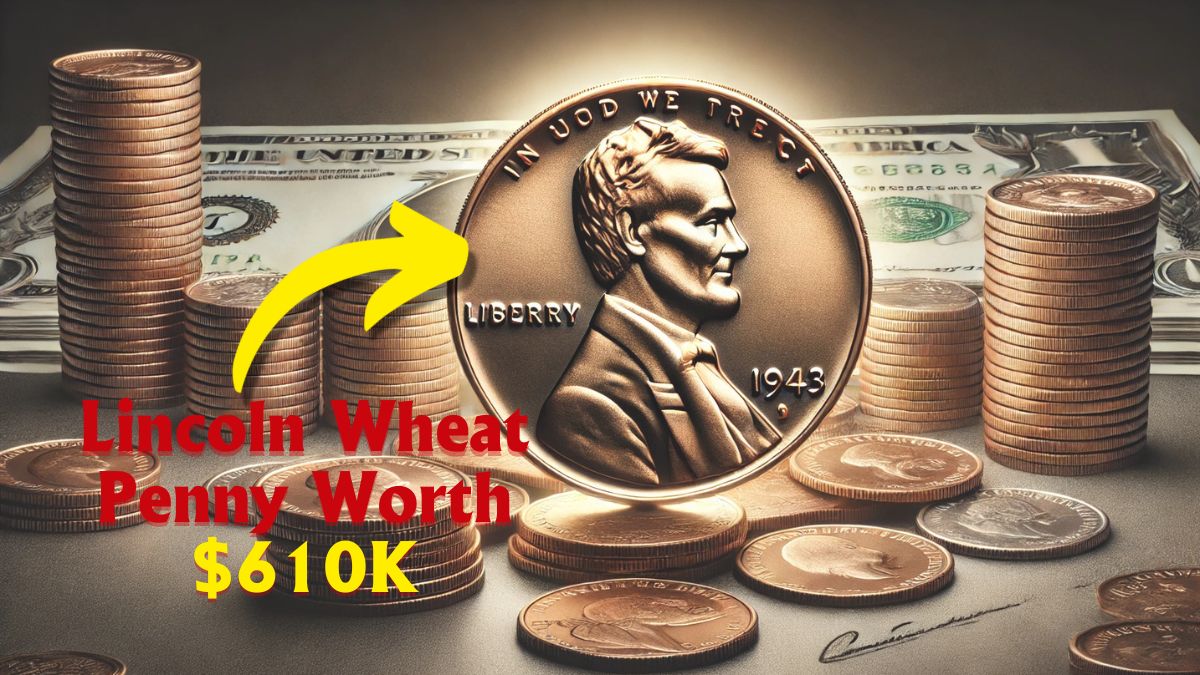
The Lincoln Wheat Penny, minted from 1909 to 1958, remains a cornerstone of American numismatics. While most of these coins hold modest value, certain rare variants can command staggering sums at auctions.
Notably, a 1943-S Lincoln Wheat Penny in bronze/copper composition has been valued at over $600,000, making it a coveted treasure among collectors. Intriguingly, some of these valuable pennies might still be hiding in plain sight within everyday currency.
The 1943 Bronze/Copper Lincoln Wheat Penny: A Historical Anomaly
During World War II, the U.S. Mint shifted from the traditional copper alloy to zinc-coated steel for penny production to conserve copper for military needs. However, a few bronze planchets from 1942 were mistakenly used in 1943, resulting in the rare 1943 bronze/copper pennies.
These errors occurred across all three mints—Philadelphia, Denver, and San Francisco—with the San Francisco mint producing only five known specimens.
Why the 1943-S Bronze/Copper Penny is So Valuable
The scarcity of the 1943-S bronze/copper penny significantly elevates its value. With only five confirmed examples, their rarity is unparalleled.
In average condition, these coins are estimated to be worth around $264,094, but in uncirculated (mint state) condition, their value can soar to approximately $621,691 or more.
Identifying a 1943-S Bronze/Copper Penny
To determine if you possess one of these rare coins, consider the following steps:
- Date and Mint Mark: Ensure the coin is dated 1943 with an ‘S’ mint mark below the date, indicating it was minted in San Francisco.
- Material Test: Perform a magnet test. Genuine 1943 bronze/copper pennies are not magnetic, whereas the common 1943 steel pennies will stick to a magnet.
- Weight Check: A bronze/copper penny weighs approximately 3.11 grams, compared to 2.7 grams for a steel penny.
- Professional Authentication: Given the prevalence of counterfeits, it’s advisable to have the coin authenticated by a reputable grading service.
Other Notable Lincoln Wheat Penny Variants
While the 1943-S bronze/copper penny is exceptionally rare, other variants also hold significant value:
| Year | Mint Mark | Description | Estimated Value (USD) |
|---|---|---|---|
| 1909 | S VDB | First-year issue with designer’s initials; limited mintage | $800 – $1,600 |
| 1914 | D | Low mintage; highly sought after by collectors | $210 – $3,000 |
| 1922 | No D | Missing mint mark due to die error; unique to Denver mint | $660 – $17,300 |
| 1955 | None | Features a prominent doubled die on the obverse | $1,000 – $2,600 |
Values vary based on condition and rarity.
The Importance of Coin Condition
The condition, or grade, of a coin profoundly impacts its value. Coins are graded on a scale from 1 to 70, with higher grades indicating better preservation and, consequently, higher value.
For instance, a 1943-S bronze/copper penny in mint state condition can be worth significantly more than one in average condition.
Protecting and Valuing Your Coins
If you believe you’ve found a rare Lincoln Wheat Penny, consider the following steps:
- Preservation: Handle the coin minimally and store it in a protective holder to prevent damage.
- Professional Grading: Submit the coin to a recognized grading service for authentication and grading.
- Stay Informed: Keep abreast of current market trends, as coin values can fluctuate based on demand and market conditions.
The allure of discovering a rare Lincoln Wheat Penny, potentially worth hundreds of thousands of dollars, adds an element of excitement to coin collecting.
By familiarizing yourself with the key characteristics of these valuable coins and taking appropriate steps to authenticate and preserve them, you might just find a hidden treasure in your pocket change.
FAQs
Why were some 1943 pennies minted in bronze/copper instead of steel?
Due to a transitional error during World War II, a few leftover bronze planchets from 1942 were mistakenly used in 1943, resulting in the rare bronze/copper pennies.
How can I tell if my 1943 penny is bronze/copper or steel?
Perform a magnet test: steel pennies are magnetic, while bronze/copper pennies are not. Additionally, bronze/copper pennies weigh about 3.11 grams, whereas steel pennies weigh approximately 2.7 grams.
Are all 1943 bronze/copper pennies from the San Francisco mint?
No, 1943 bronze/copper pennies were minted at all three mints: Philadelphia, Denver, and San Francisco. However, the San Francisco mint produced only five known specimens.
-

 Government Aid1 week ago
Government Aid1 week agoFebruary SSDI Payments: Only This Group Will Receive the First Checks of Next Month
-
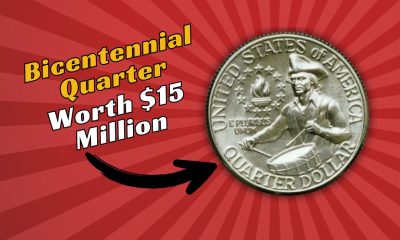
 Finance2 days ago
Finance2 days agoRare Bicentennial Quarter Worth $15 Million
-
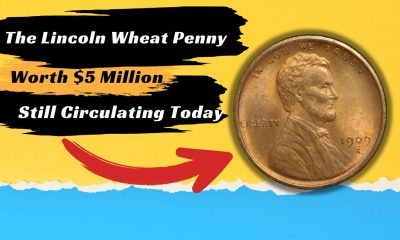
 Finance5 days ago
Finance5 days agoThe Lincoln Wheat Penny Worth $5 Million- Still Circulating Today
-
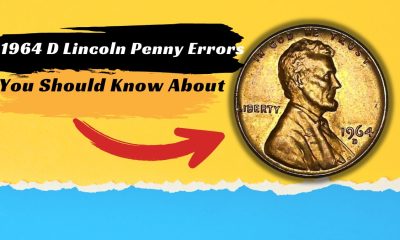
 Finance2 days ago
Finance2 days agoRare Coins: The 1964 D Lincoln Penny Errors You Should Know About
-

 Government Aid2 days ago
Government Aid2 days agoSocial Security Announces 2025 Check Increase, But a 23% Reduction is Expected Soon
-
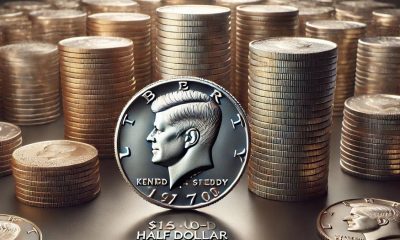
 Finance2 days ago
Finance2 days ago1970-D Kennedy Half Dollar- A Rare Coin Worth Over $150,000 Still in Circulation!
-

 Government Aid5 days ago
Government Aid5 days agoThe Complete February SSDI Payment Schedule: Discover When You’ll Receive Your Disability Benefits
-

 Government Aid1 week ago
Government Aid1 week agoConfirmed: What You Need to Know to Collect $1,900 in Social Security by January 31

